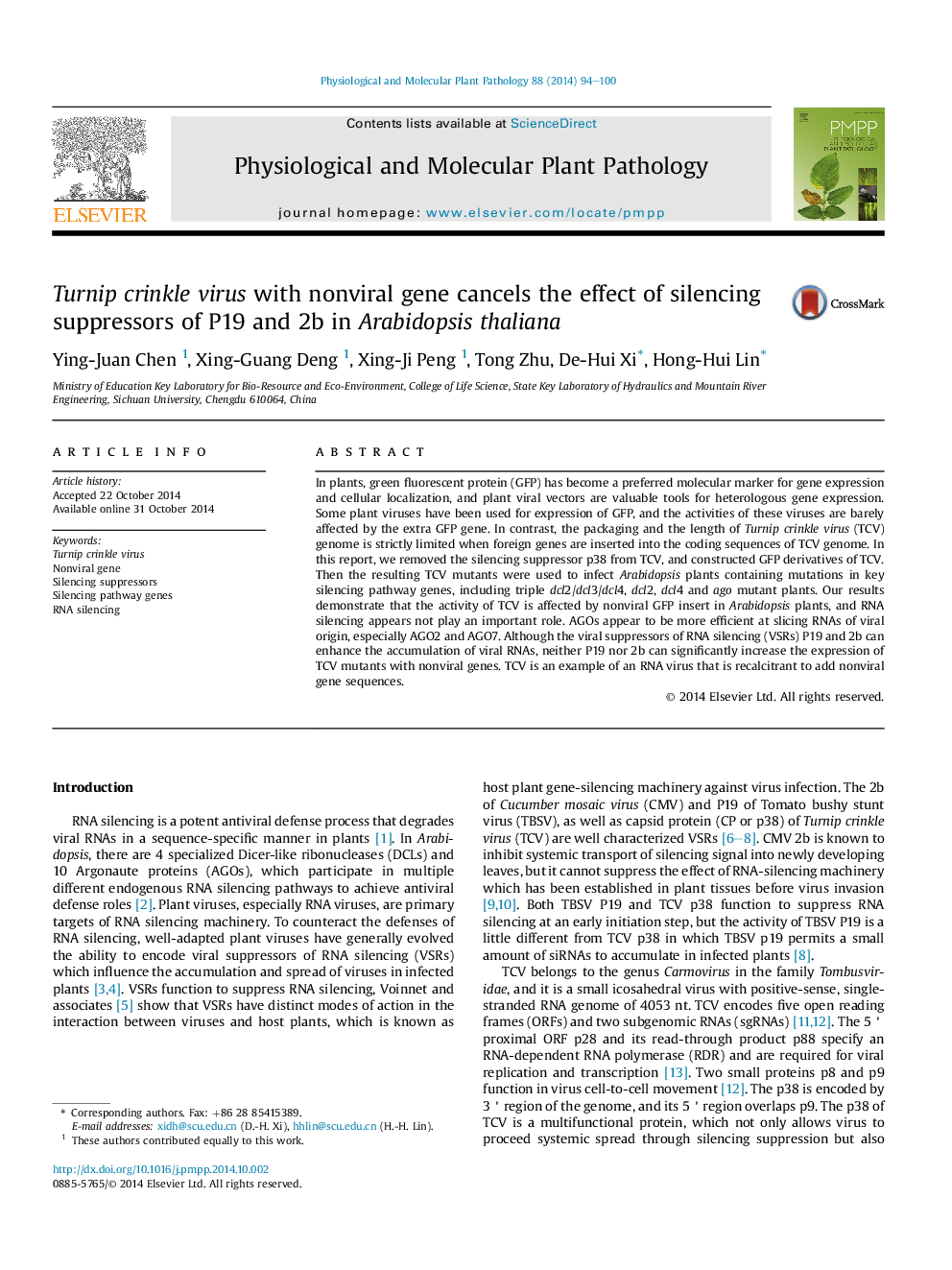| Article ID | Journal | Published Year | Pages | File Type |
|---|---|---|---|---|
| 2836307 | Physiological and Molecular Plant Pathology | 2014 | 7 Pages |
•Our novel findings provided a basis to understand TCV with nonviral GFP is preferentially clearance in Arabidopsis plants.•Viral suppressors of RNA silencing (VSRs) did not contribute to increase the expression of TCV with nonviral gene.•TCV was an example of an RNA virus that was recalcitrant to insertion of nonviral gene sequences.
In plants, green fluorescent protein (GFP) has become a preferred molecular marker for gene expression and cellular localization, and plant viral vectors are valuable tools for heterologous gene expression. Some plant viruses have been used for expression of GFP, and the activities of these viruses are barely affected by the extra GFP gene. In contrast, the packaging and the length of Turnip crinkle virus (TCV) genome is strictly limited when foreign genes are inserted into the coding sequences of TCV genome. In this report, we removed the silencing suppressor p38 from TCV, and constructed GFP derivatives of TCV. Then the resulting TCV mutants were used to infect Arabidopsis plants containing mutations in key silencing pathway genes, including triple dcl2/dcl3/dcl4, dcl2, dcl4 and ago mutant plants. Our results demonstrate that the activity of TCV is affected by nonviral GFP insert in Arabidopsis plants, and RNA silencing appears not play an important role. AGOs appear to be more efficient at slicing RNAs of viral origin, especially AGO2 and AGO7. Although the viral suppressors of RNA silencing (VSRs) P19 and 2b can enhance the accumulation of viral RNAs, neither P19 nor 2b can significantly increase the expression of TCV mutants with nonviral genes. TCV is an example of an RNA virus that is recalcitrant to add nonviral gene sequences.
